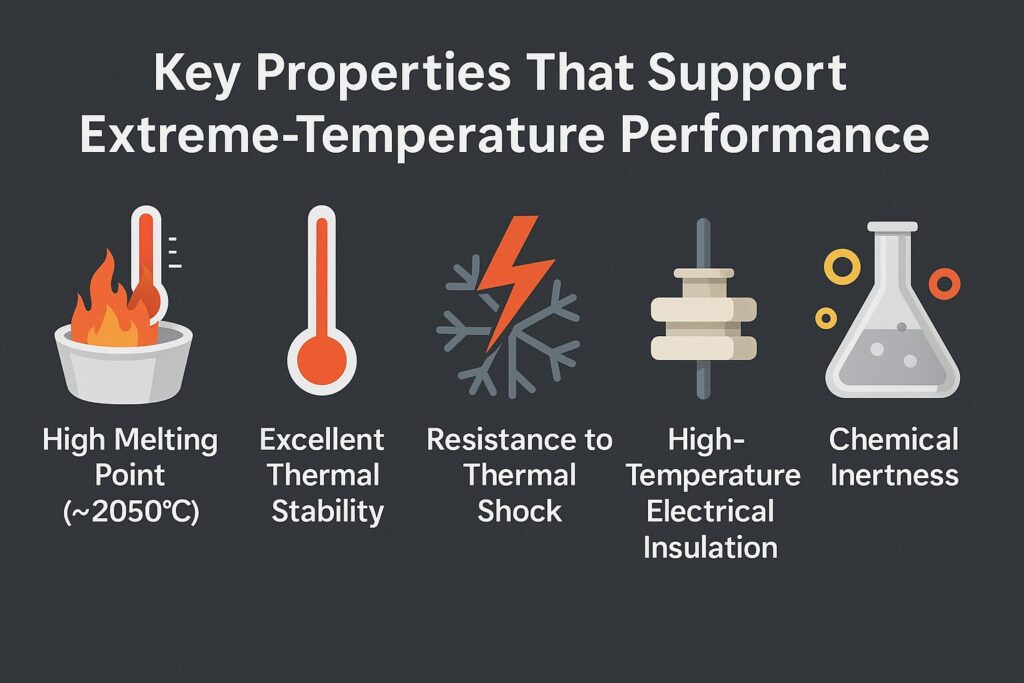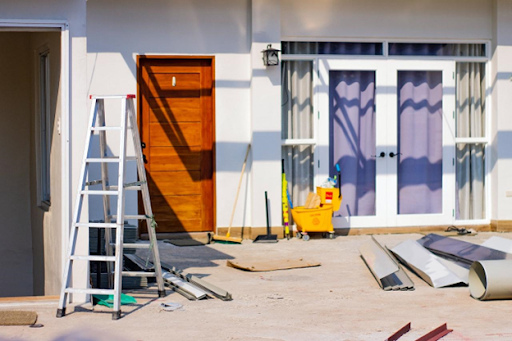When equipment is exposed to extreme heat, not all materials can maintain their structural integrity or functional performance. Alumina ceramic stands out for its ability to withstand demanding thermal environments while remaining stable, durable, and chemically inert. These characteristics make it essential in high-temperature furnaces, laboratory heating systems, and industrial thermal processes.
Table of Contents
What Is Alumina Ceramic?
Alumina ceramic is a high-strength, oxide-based engineering material composed primarily of aluminum oxide (Al₂O₃). It is available in various purity levels, typically between 95% and 99.5%, with higher purities offering superior thermal and mechanical performance.
Because of its dimensional stability, resistance to heat, and chemical inertness, alumina is used to manufacture furnace components, insulators, substrates, crucibles, rods, and a wide range of high-temperature structural parts.
Components such as alumina tubes are widely used in thermal processing systems, industrial furnaces, and laboratory heating equipment because they maintain structural stability and insulation performance under extreme heat.
Key Properties That Support Extreme-Temperature Performance
1. High Melting Point (~2050°C)
Alumina maintains its structural integrity at temperatures far above the limit of most metals. This makes it suitable for continuous high-temperature exposure in furnaces and reactors.
2. Excellent Thermal Stability
Even under 1200–1700°C operating conditions, alumina does not soften or deform, ensuring consistent performance during long-term heating.
3. Resistance to Thermal Shock
Its low thermal expansion and strong rigidity help the material withstand rapid heating and cooling cycles better than many other ceramics or glasses.
4. High-Temperature Electrical Insulation
Alumina maintains electrical insulation even at elevated temperatures, making it suitable for heater supports, thermocouple assemblies, and electrical furnace components.
5. Chemical Inertness
The material resists corrosion by acids, gases, molten metals, and reactive chemicals, maintaining stability in harsh thermal environments.
Due to these combined properties, alumina ceramic is often selected for applications where long-term thermal performance and chemical resistance are required.

Where Alumina Ceramic Is Used in Extreme-Temperature Applications
1. Industrial Furnaces and Kilns
Alumina is widely used to produce high-temperature furnace components such as:
- Heating element protection tubes
- Insulating supports
- Thermocouple protection sheaths
- Furnace liners
These components ensure safe, stable operation during intense thermal cycling.
2. Laboratory Thermal Analysis and High-Heat Testing
In laboratories, alumina crucibles and supports maintain structural and chemical stability under extreme temperatures. They are commonly used in:
- Differential scanning calorimetry (DSC)
- Thermogravimetric analysis (TGA)
- Ash testing
- Tube furnace systems
3. HVAC and Heating Systems
In certain high-temperature heating systems, alumina provides:
- Insulation for electric heating elements
- High-temperature supports
- Heat-resistant structural components
4. Chemical Processing and Fluid-Handling Equipment
Alumina components are used where materials must endure both high temperatures and chemical exposure. Typical parts include:
- Pump and valve liners
- Flow restrictors
- Nozzles
- Wear-resistant inserts
How Alumina Compares to Other High-Temperature Materials
Alumina vs. Stainless Steel
- Stainless steel strength decreases above ~800°C
- Alumina remains stable above 1500°C
- Alumina offers superior oxidation and corrosion resistance
Alumina vs. Quartz or Glass
- Quartz withstands temperature but lacks mechanical strength
- Alumina supports both structural load and extreme temperatures
- Alumina resists abrasion and impact better
Alumina vs. Refractory Bricks
- Bricks are mainly for structural lining
- Alumina is for precision, high-performance components
- Alumina offers higher purity and more predictable behavior
Limitations of Alumina Ceramic
Despite its strengths, alumina has some limitations:
- More brittle than metals
- Requires specialized machining
- Thin-walled parts need careful engineering
- Not suitable for extreme repeated thermal shock beyond design limits
Choosing the Right Alumina Component for High-Temperature Use
When selecting alumina for furnaces or high-temperature equipment, consider:
- Required purity level
- Component geometry (tube, plate, crucible, insulator)
- Mechanical load requirements
- Expected thermal cycling conditions
- Chemical exposure
- Necessary dimensional tolerances
Proper material selection ensures reliable, long-term performance in demanding environments.
Conclusion
Alumina ceramic is one of the most reliable materials for extreme-temperature engineering. Its thermal stability, electrical insulation, corrosion resistance, and mechanical strength make it essential in furnace systems, laboratory heating equipment, HVAC assemblies, and chemical processing applications.
Because of its strong performance across these demanding conditions, alumina ceramic continues to be a preferred material for high-temperature industrial and laboratory environments.





